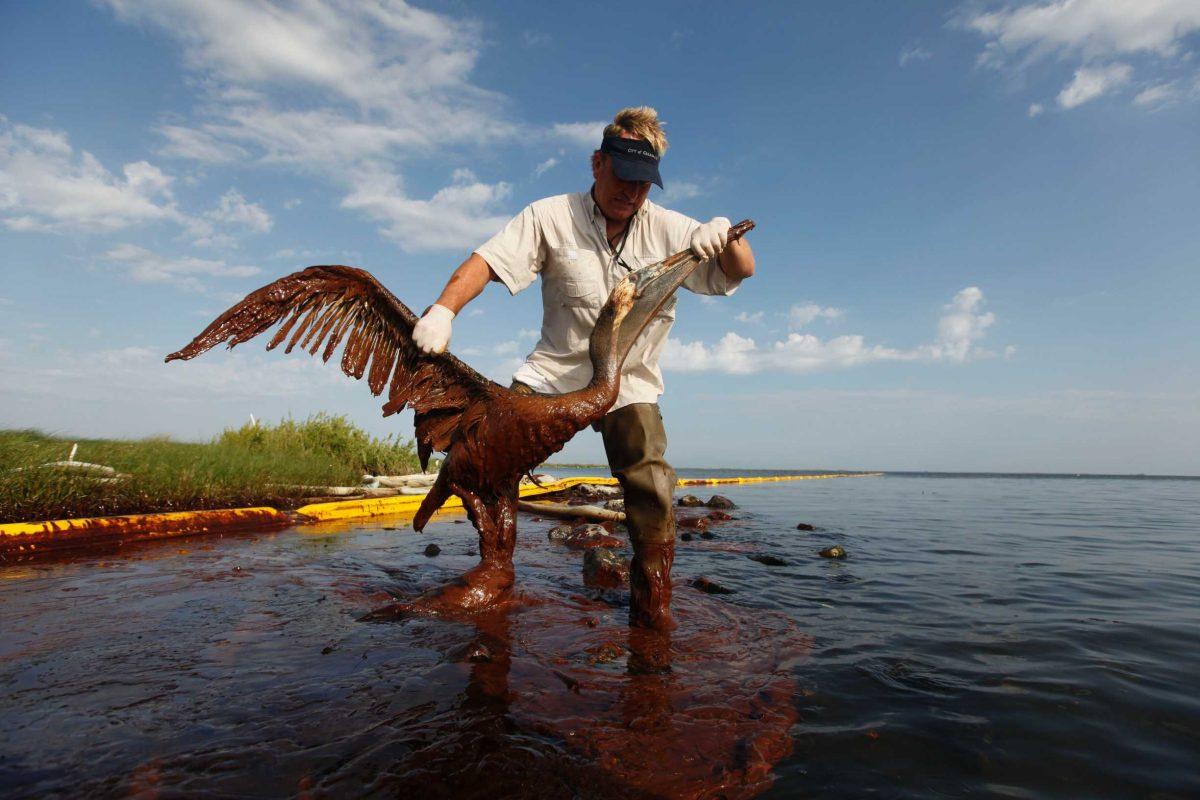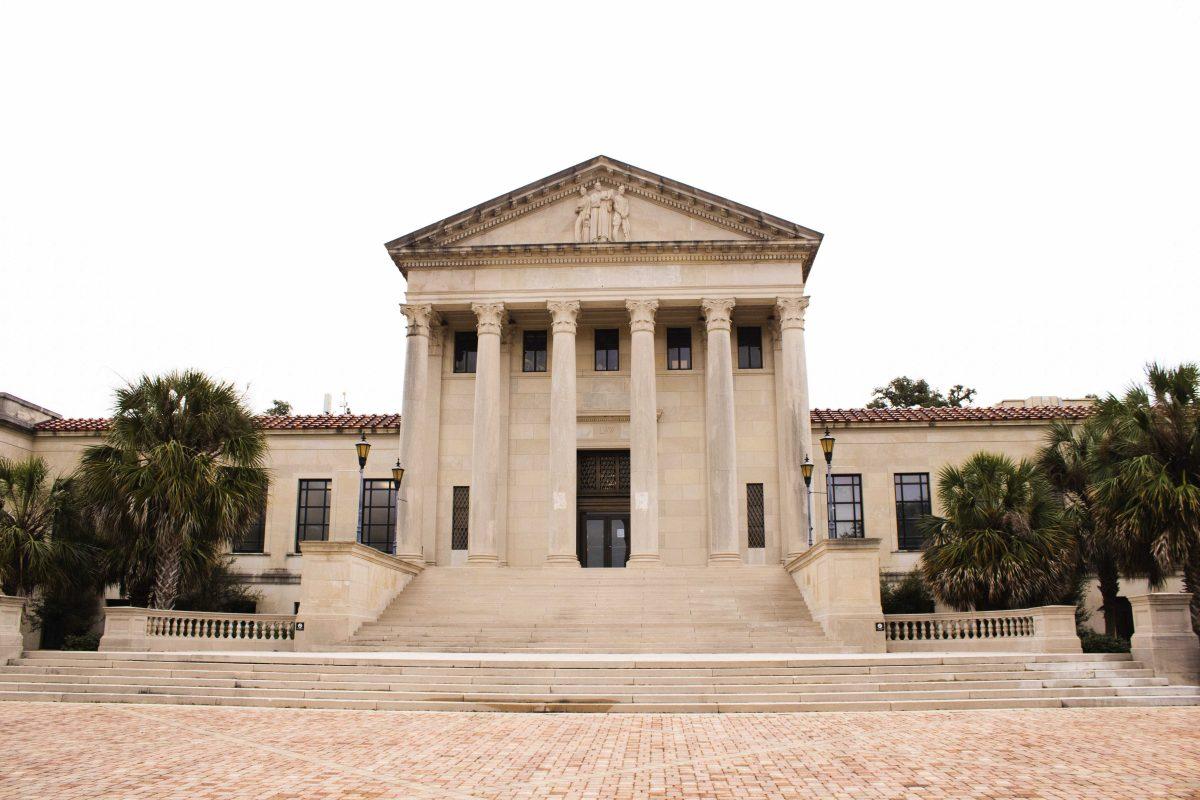Black blobs washing on sandy beaches, brown pelicans grounded with oil-covered feathers and fishermen looking for work have become common sights in national media since the Deepwater Horizon rig exploded off the Louisiana coast 50 days ago, spewing millions of gallons of oil into the Gulf of Mexico.But these scenes are only the beginning of long-lasting effects hitting close to home for Gulf Coast residents. And at the University, experts and students alike are scrambling to understand and remedy what is now the nation’s worst-ever environmental disaster.”Scientists were telling us we had to think long-term with the impacts and how long recovery will take,” said Marcia McNutt, director of the U.S. Geological Survey. “This was not a month-long incident, but this will be decades that we deal with the impact. It’s all one big ecosystem, so we have to worry about everything from the plankton up the chain.”McNutt, speaking Thursday during the Consortium for Ocean Leadership’s meeting, discussed the impact and response of the oil spill with more than 100 experts from across the country.Edward Overton, a professor emeritus of environmental science who spoke during the day-long meeting, reiterated what is still the top priority for both government and BP officials — stopping the well’s flowing oil.”BP needs to stop the bloody well, and the rest of the community needs to make sure this oil doesn’t wash on shore,” Overton said. “If there is a skimmer in the world, it should be in the Gulf today.”BP successfully installed a Lower Marine Riser Package, or LMRP, containment cap Thursday, slowing the flow rate of oil after numerous failed attempts to stop the leak. The oil is collected at the well and piped to a drill ship on the water’s surface. BP officials estimate a total of 10,500 barrels of oil were collected on Saturday, and the cap should stop at least that much oil from daily leaking into the Gulf, according to a Monday news release. An estimated 12,000 to 19,000 barrels per day, or bpd, are leaking into the Gulf, according to the U.S. Geological Survey.”In the Exxon Valdez [oil spill in 1989], everyone knew what the volume of the tanker was down to the liter,” McNutt, said. “In this particular oil spill, what has been very unnerving to the public is not knowing the exact release of oil from the well.”The USGS estimate of 12,000 to 19,000 bpd is based on the aggregate of four different methodologies calculating the amount of oil coming from the leak. Conservative methods placed the leak closer to 11,000 bpd while the highest estimates are as great as 25,000 bpd. The U.S. Coast Guard believed on April 28 the flow rate was a mere 5,000 bpd despite that estimate being five times greater than figures initially given. BP maintains it “will be a few days” before it can gauge the containment cap’s success, and the oil giant plans to connect a series of hoses to syphon additional oil to the surface in mid-June. The company hopes to have installed a more permanent LMRP with detachable components by early July, giving flexibility to move tankers from the Gulf should a hurricane threaten containment options. BP started drilling two relief wells, each a three-month process, on May 2 and again on May 16. These wells will intercept oil from the original well nearly 18,000 feet below the sea floor, according to BP releases. As of Monday, the first relief well reached nearly 13,000 feet while the second neared 9,000 feet in depth. BP has spent an estimated $1.25 billion on response efforts thus far, according to the release, and though BP shares jumped slightly after the containment cap’s installation, the oil giant has lost nearly a third of it’s market value — some $20 billion — since the crisis began. President Obama, who has been criticized for his administration’s slow response and his own inability to show emotion when talking about the spill, has visited the Gulf Coast region three times since the leak began, most recently stopping in Grand Isle on Friday.His administration not only sent BP a $69-million bill to cover some of the costs already footed by American taxpayers, but also created a bipartisan committee to examine the spill’s causes, split the U.S. Minerals Management Service into three new bureaus, fired the director of the MMS, issued a six-month moratorium on deepwater drilling in the Gulf and is no longer approving drilling permits for the Gulf’s shallow waters. U.S. Attorney General Eric Holder announced June 1 the Justice Department’s launch of criminal and civil investigations of the spill.Some politicians, including Gov. Bobby Jindal, have harshly opposed Obama’s decision to halt drilling in the Gulf.Jindal urged Obama in a June 2 letter to quickly ensure all rigs follow federal regulations so they may reopen, keeping Louisiana jobs intact. The moratorium could cause the loss of 3,000 to 6,000 Louisiana jobs within the next two to three weeks, based on figures from the Louisiana Department of Economic Development, while more than 20,000 existing and potential new jobs could be lost during the next 18 months. “These are hard times in Louisiana and across the Gulf Coast, an area that has already seen more than its fair share of troubles,” Obama said in his email remarks after visiting Grand Isle. “The people of this region have met this terrible catastrophe with seemingly boundless strength and character in defense of their way of life. What we owe them is a commitment by our nation to match the resilience they have shown. That is our mission. And it is one we will fulfill.”–Contact Nicholas Persac at [email protected]
Oil spill: worst environmental disaster in US history
June 7, 2010
Plaquemines Parish coastal zone director P.J. Hahn lifts an oil-covered pelican that was stuck in oil Saturday at Queen Bess Island in Barataria Bay, just off the Gulf of Mexico in Plaquemines Parish.






